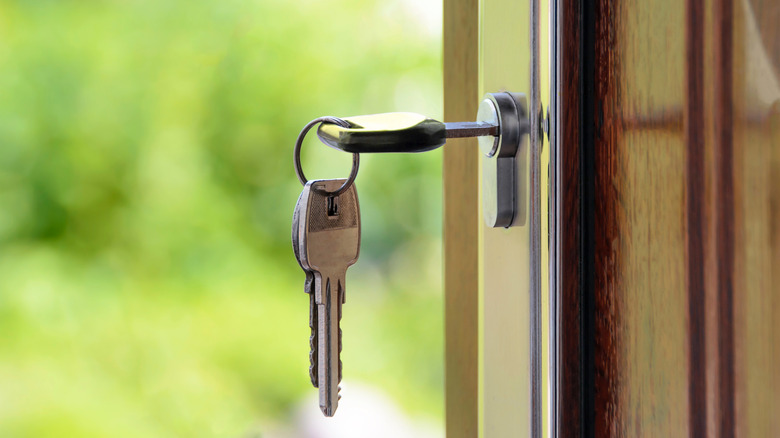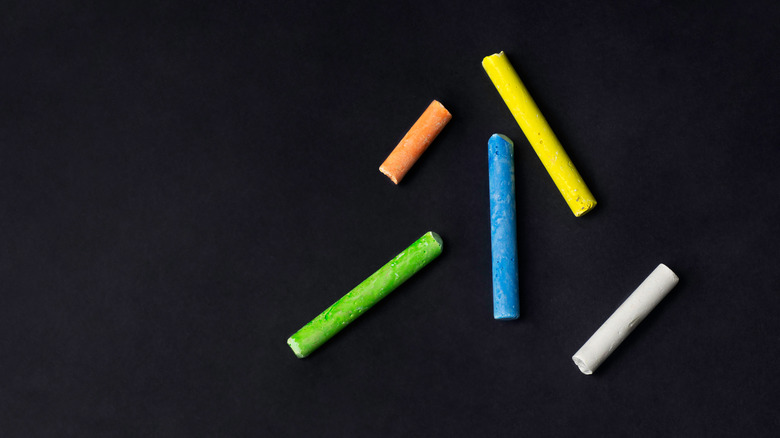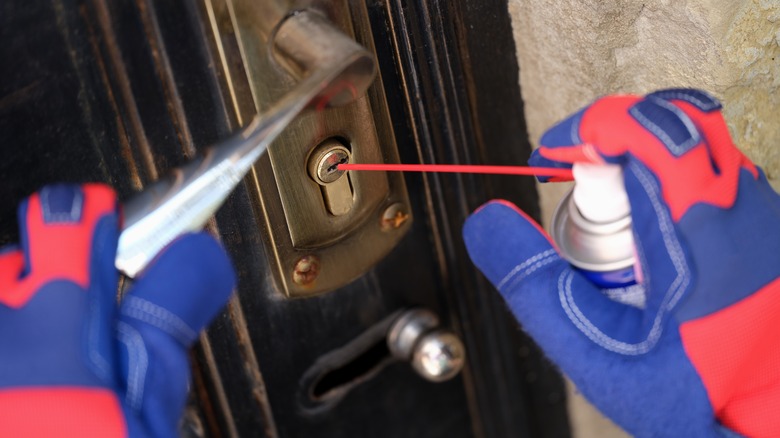The Clever Hack To Prevent Your Door Keys From Sticking
Are you stuck outside with a sticky house key that won't work in the lock? You don't need to panic or immediately call a locksmith because you can follow a clever hack to get yourself inside quickly. There are many reasons that could explain why your key isn't working. If it feels like it's sticking when you can't easily insert it or twist it in the lock, the worst thing you can do is try and force it to work. This will only make it harder to fix the problem because you could break your key or any of the mechanisms inside the lock.
You may have this problem because your key is old and the teeth are worn down. If it's new but wasn't cut correctly, or if you accidentally used it on the wrong lock and bent it out of shape, you'll also be left with a sticking key. Those issues aside, one common reason why your key is sticking is because dirt, dust, or any other kind of grime is building up inside the lock. It'll act like glue inside the mechanism, and the best way to fix it is by breaking it up with a dry lubricant.
Put chalk on your keys
Covering your keys with chalk is an easy fix to stop your keys from sticking in the lock. You're more likely to have some sidewalk chalk lying around in your yard or shed that you can easily access than other methods. All you have to do is run the chalk a few times along the teeth and tip of your key. Then move it in and out of the lock several times without twisting it. Doing this disperses the chalk powder so it can absorb any moisture or dirt from the mechanisms in your lock that are causing it to stick. Now you can turn your key and open the door.
If you don't have any chalk available, you could also try this hack with a pencil. The lead is made of graphite, which works similarly to unstick your lock since it's a dry lubricant. Simply rub the tip of a pencil over your key and then insert it into the lock a few times.
Spray a dry lubricant in your locks
When chalk and pencils don't work, you need to step it up a notch and spray a lubricant directly into the lock instead of onto your key. You should look for a dry lubricant or graphite powder at your local hardware store. These are the best choices because they'll get the mechanisms moving without making the dirt trapped inside become sticky. You want to avoid WD-40 and other petroleum-based products because they will only provide a temporary fix. Since they're wet lubricants, they will trap even more grime in your locks over time.
Once you have the product ready, spray a small amount into the hole of your lock. Then put your key in and pull it out, ensuring not to twist it. To make sure all the mechanisms are moving correctly, spray more lubricant and repeat the process. Now you can try to unlock the door. If you're still struggling to get inside, it's time to call a locksmith. Trying to force the key to work will only damage it.


